Abstract
In two experiments, pigeons obtained food according to variable-interval schedules. In the first experiment, equivalent variable-interval schedules with average interreinforcer intervals ranging between 10 and 80 s in different conditions were studied in both open and closed economies. Response rates increased as reinforcement frequency decreased in the closed economy. By contrast, in the open economy response rates decreased for 1 bird and were variable for the other as reinforcement frequency decreased. The second experiment showed that the differences in the functions between responding and reinforcement frequency in the two types of economies were not due to changes in deprivation level. These results suggest that open and closed economies yield different behavioral effects. This conclusion is supported further by a reconsideration of previous findings that appear counter to the conclusion.
Keywords: open economy, closed economy, variable-interval schedules, behavioral economics, behavior regulation, key peck, pigeons
Full text
PDF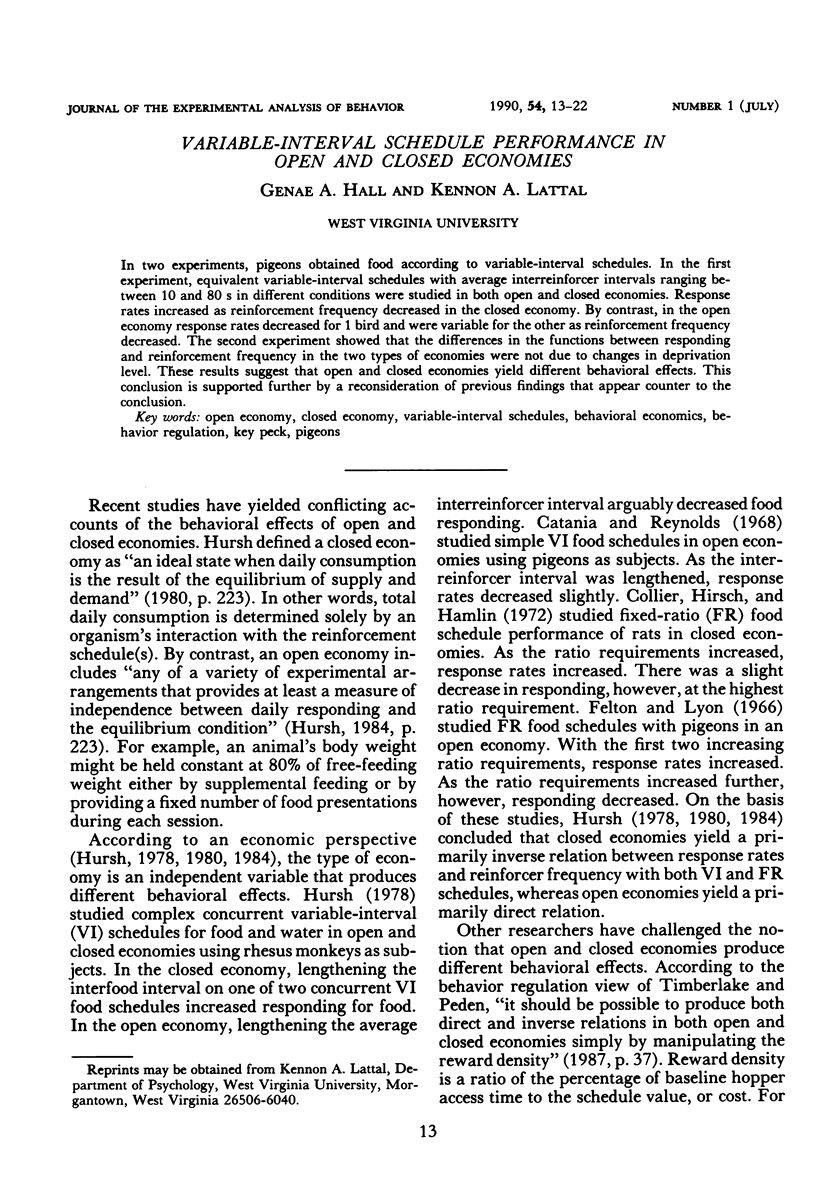

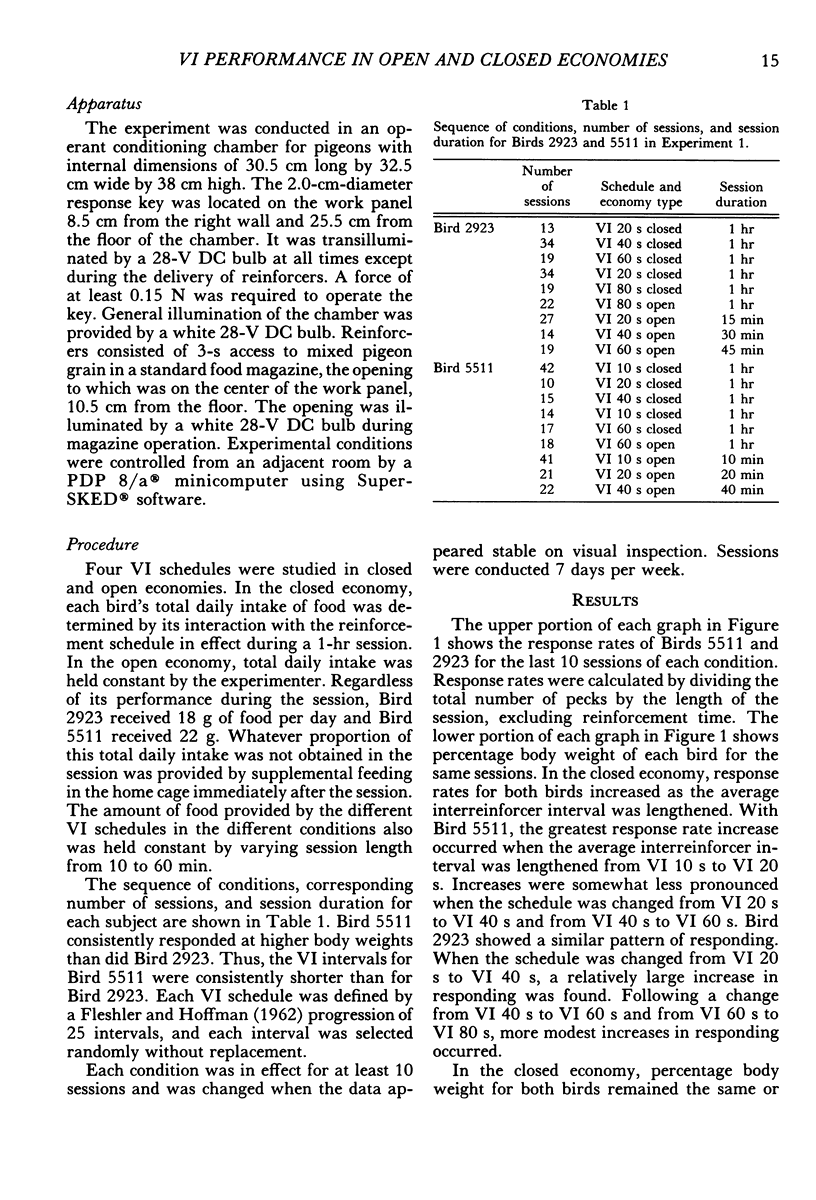
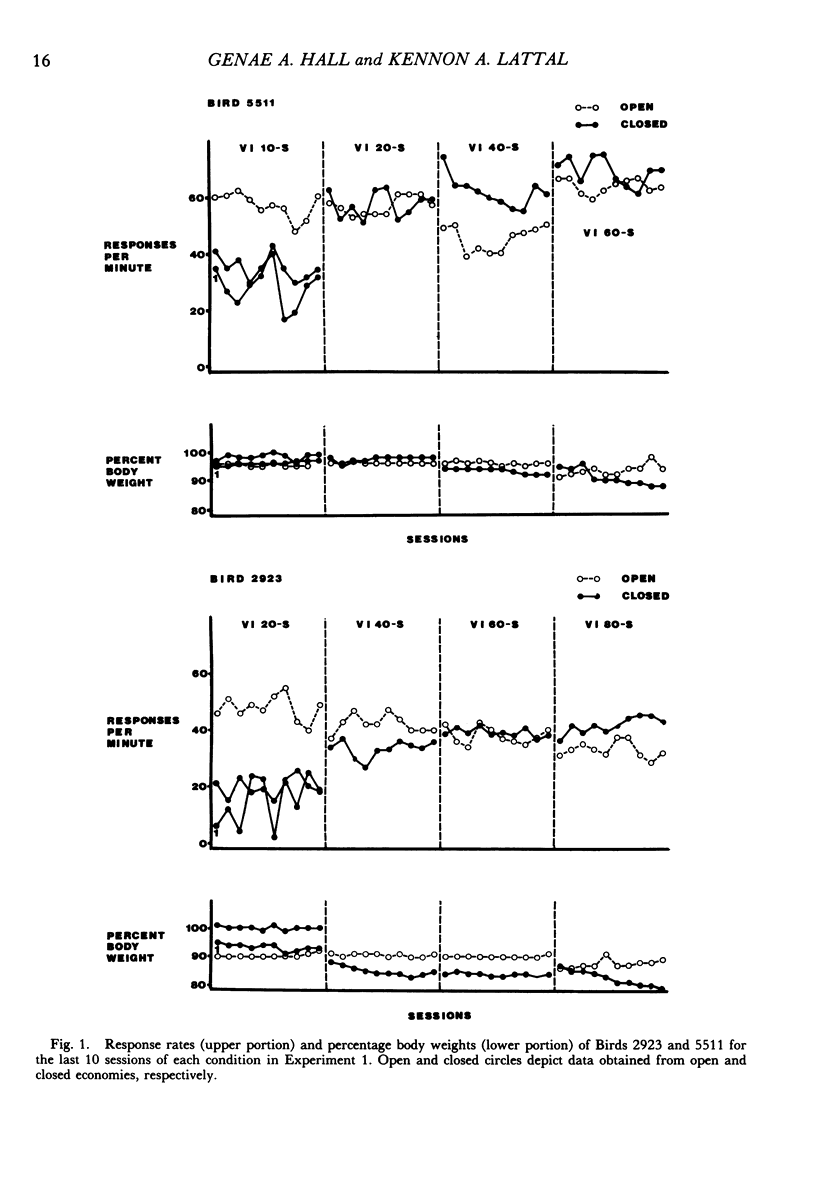
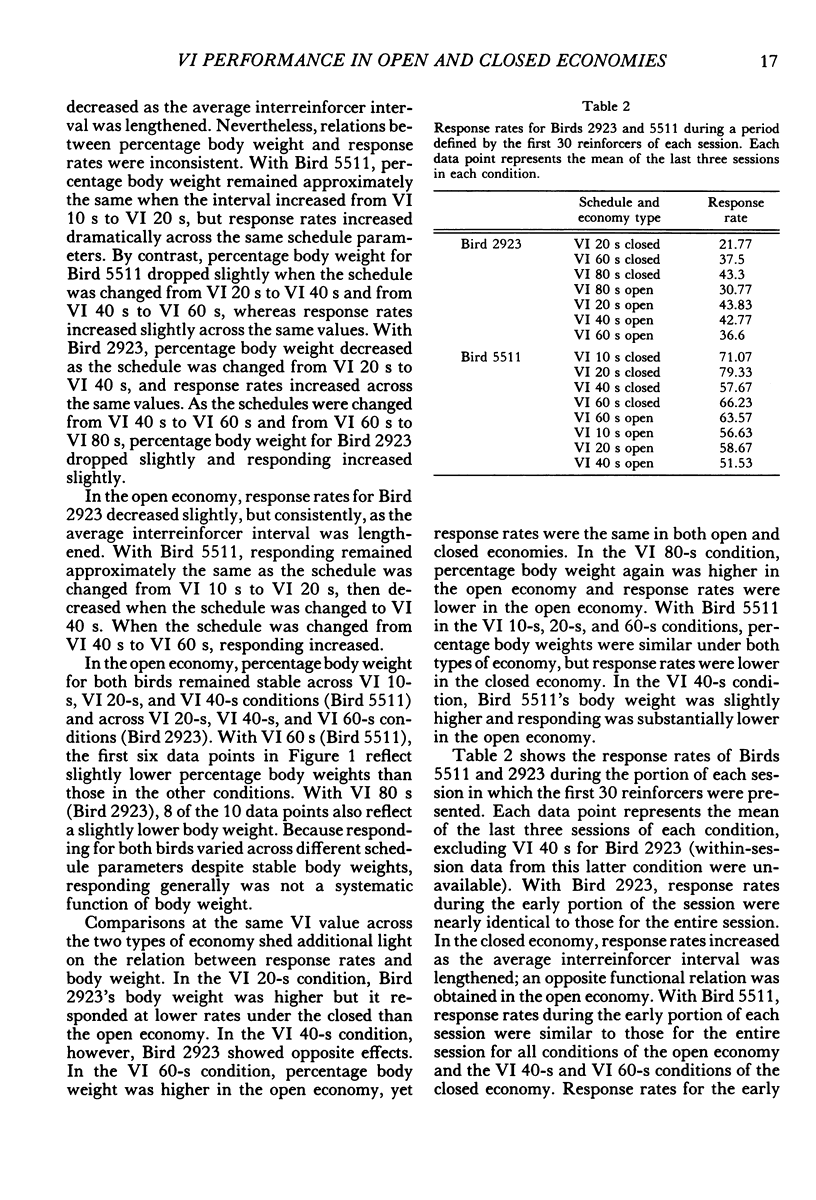
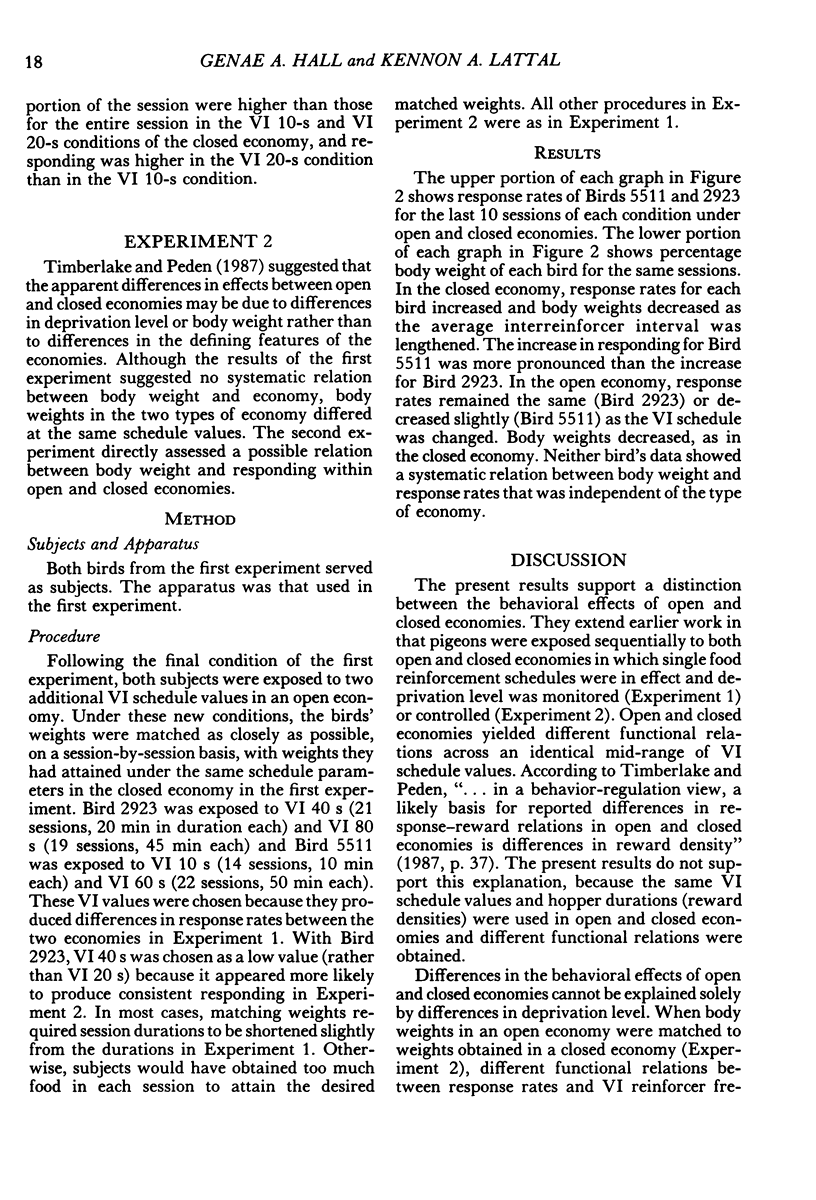

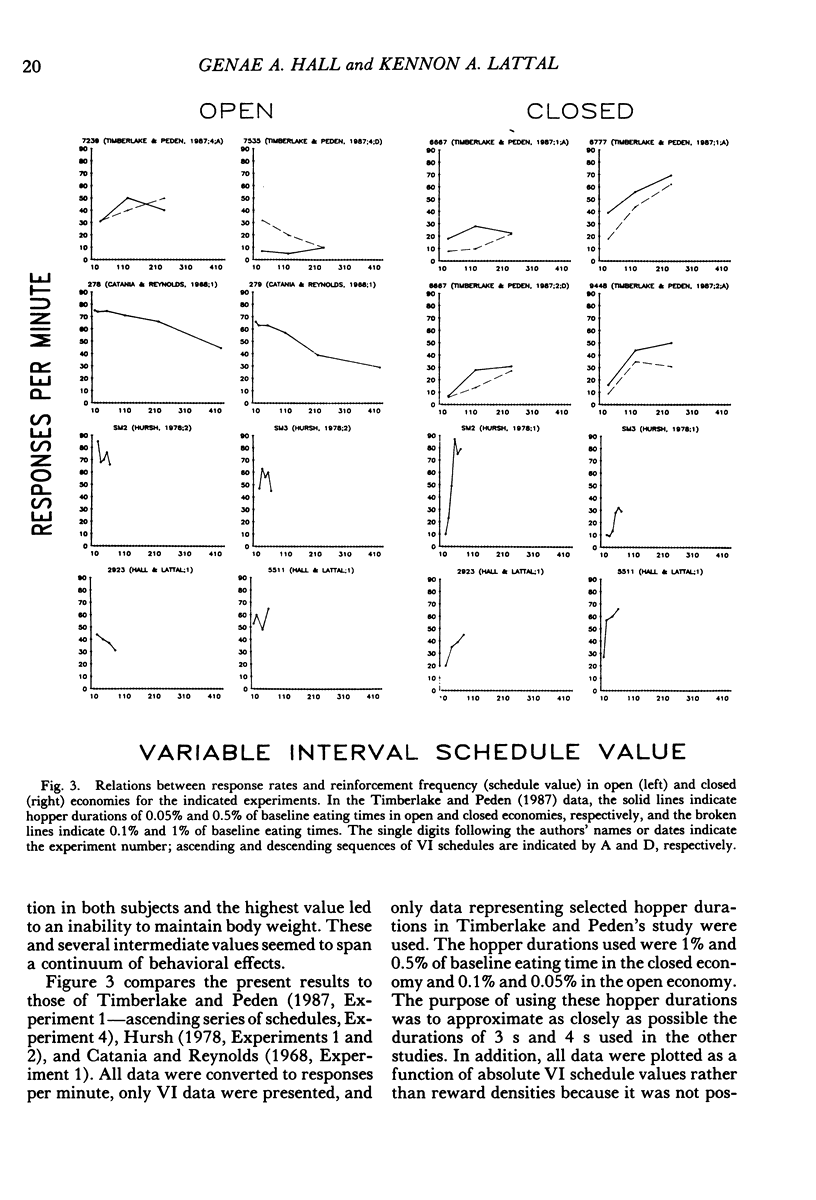
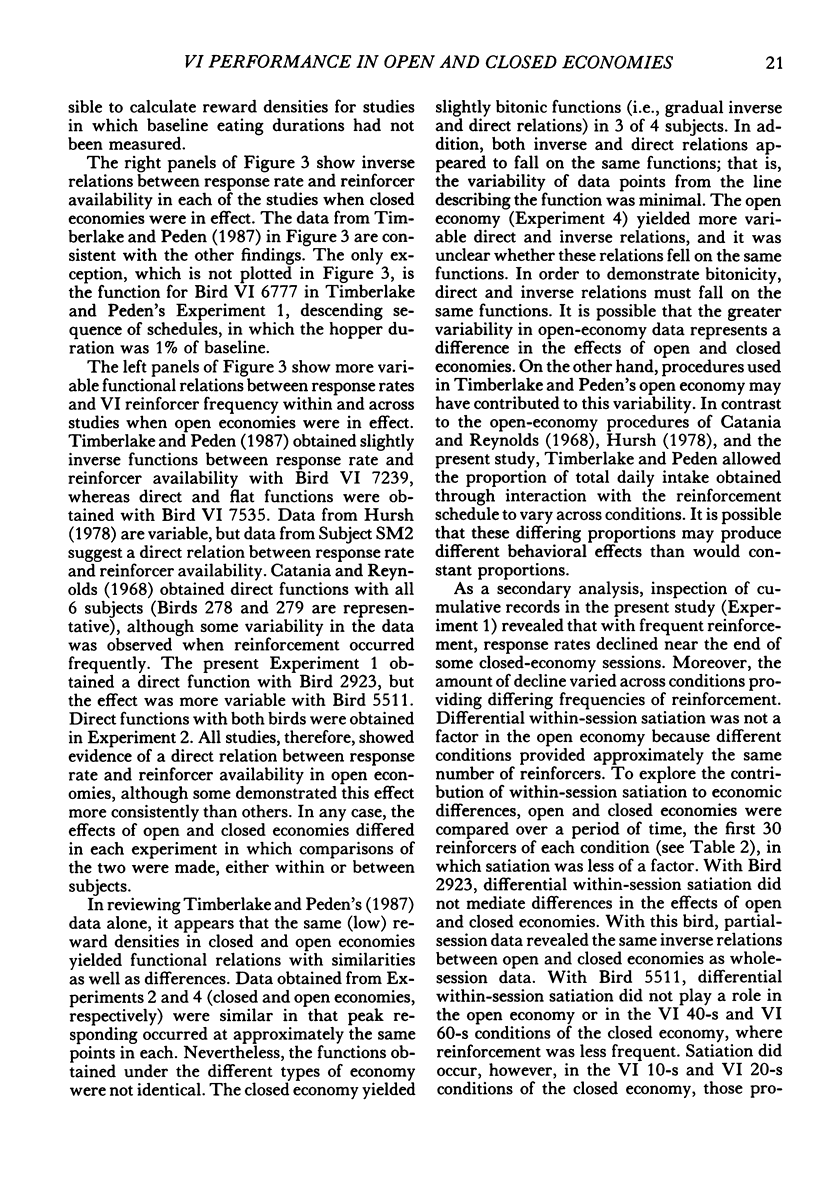
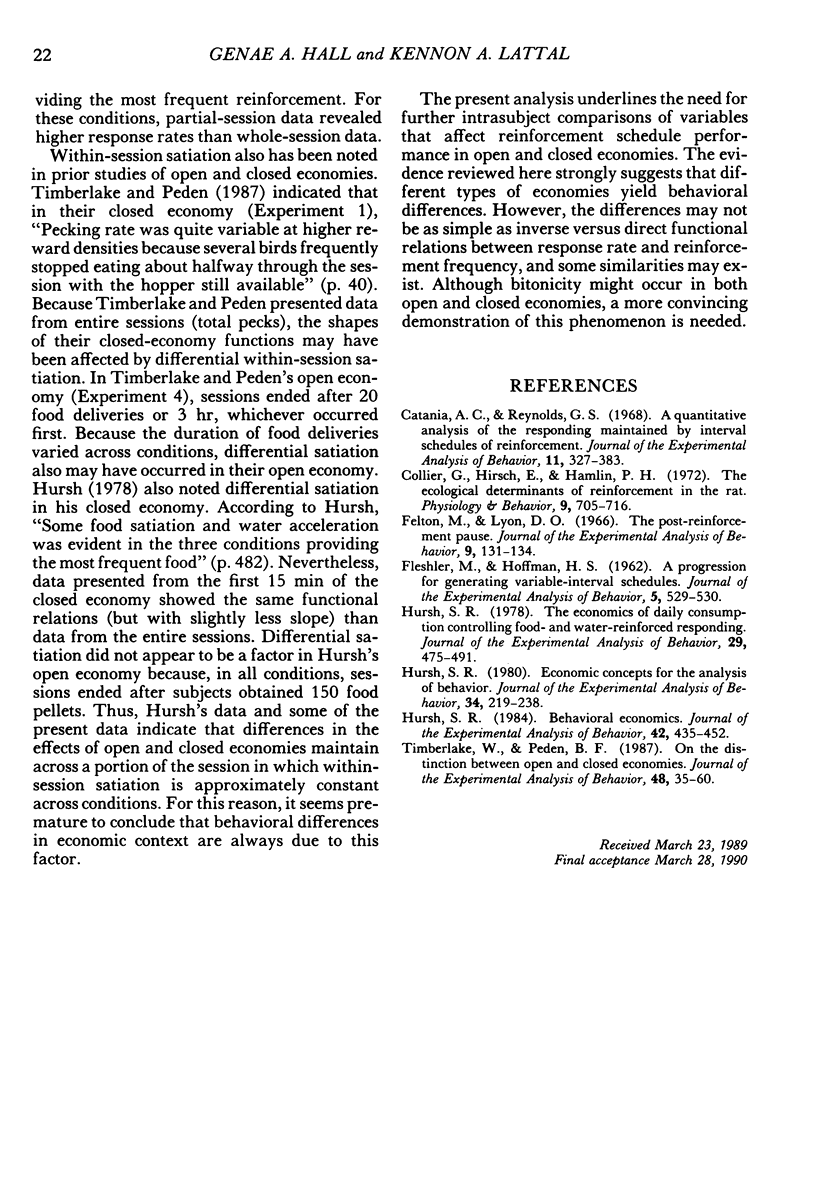
Selected References
These references are in PubMed. This may not be the complete list of references from this article.
- Catania A. C., Reynolds G. S. A quantitative analysis of the responding maintained by interval schedules of reinforcement. J Exp Anal Behav. 1968 May;11(3 Suppl):327–383. doi: 10.1901/jeab.1968.11-s327. [DOI] [PMC free article] [PubMed] [Google Scholar]
- Collier G., Hirsch E., Hamlin P. H. The ecological determinants of reinforcement in the rat. Physiol Behav. 1972 Nov-Dec;9(5):705–716. doi: 10.1016/0031-9384(72)90038-8. [DOI] [PubMed] [Google Scholar]
- FLESHLER M., HOFFMAN H. S. A progression for generating variable-interval schedules. J Exp Anal Behav. 1962 Oct;5:529–530. doi: 10.1901/jeab.1962.5-529. [DOI] [PMC free article] [PubMed] [Google Scholar]
- Felton M., Lyon D. O. The post-reinforcement pause. J Exp Anal Behav. 1966 Mar;9(2):131–134. doi: 10.1901/jeab.1966.9-131. [DOI] [PMC free article] [PubMed] [Google Scholar]
- Hursh S. R. Behavioral economics. J Exp Anal Behav. 1984 Nov;42(3):435–452. doi: 10.1901/jeab.1984.42-435. [DOI] [PMC free article] [PubMed] [Google Scholar]
- Hursh S. R. Economic concepts for the analysis of behavior. J Exp Anal Behav. 1980 Sep;34(2):219–238. doi: 10.1901/jeab.1980.34-219. [DOI] [PMC free article] [PubMed] [Google Scholar]
- Hursh S. R. The economics of daily consumption controlling food- and water-reinforced responding. J Exp Anal Behav. 1978 May;29(3):475–491. doi: 10.1901/jeab.1978.29-475. [DOI] [PMC free article] [PubMed] [Google Scholar]
- Timberlake W., Peden B. F. On the distinction between open and closed economies. J Exp Anal Behav. 1987 Jul;48(1):35–60. doi: 10.1901/jeab.1987.48-35. [DOI] [PMC free article] [PubMed] [Google Scholar]


